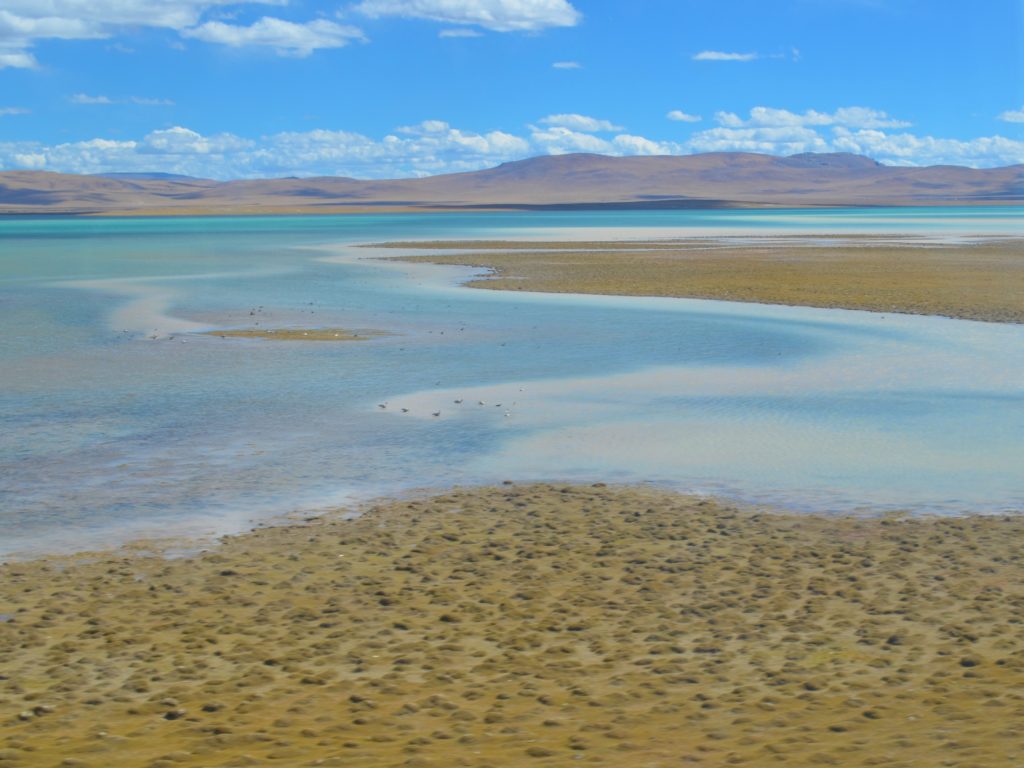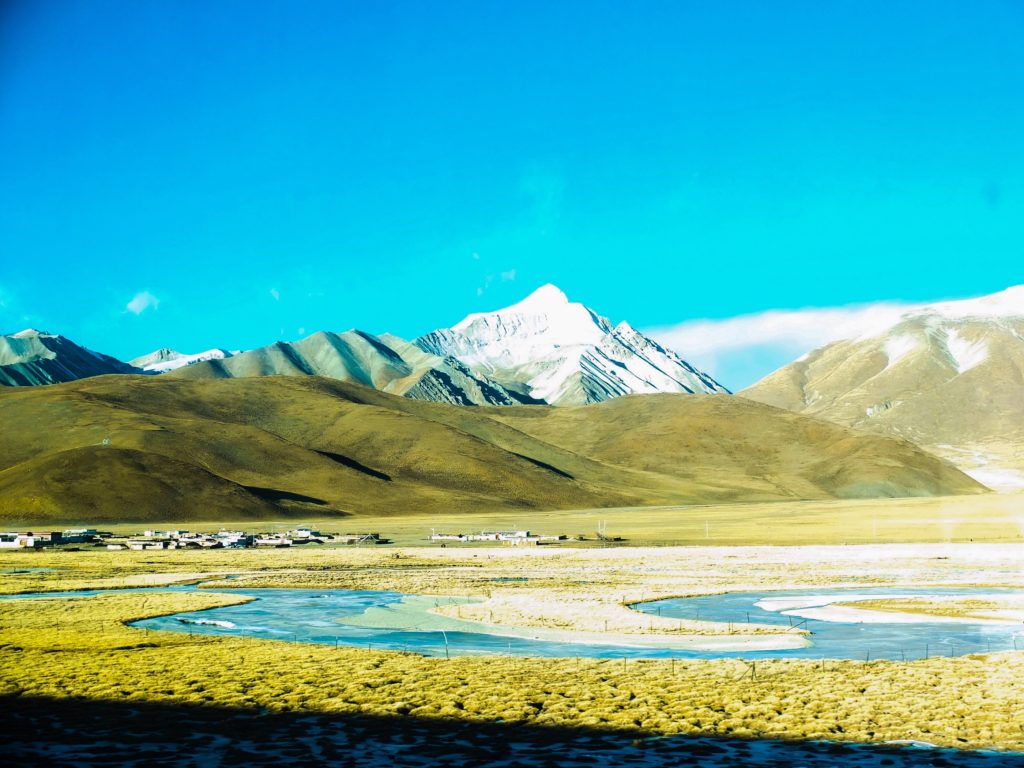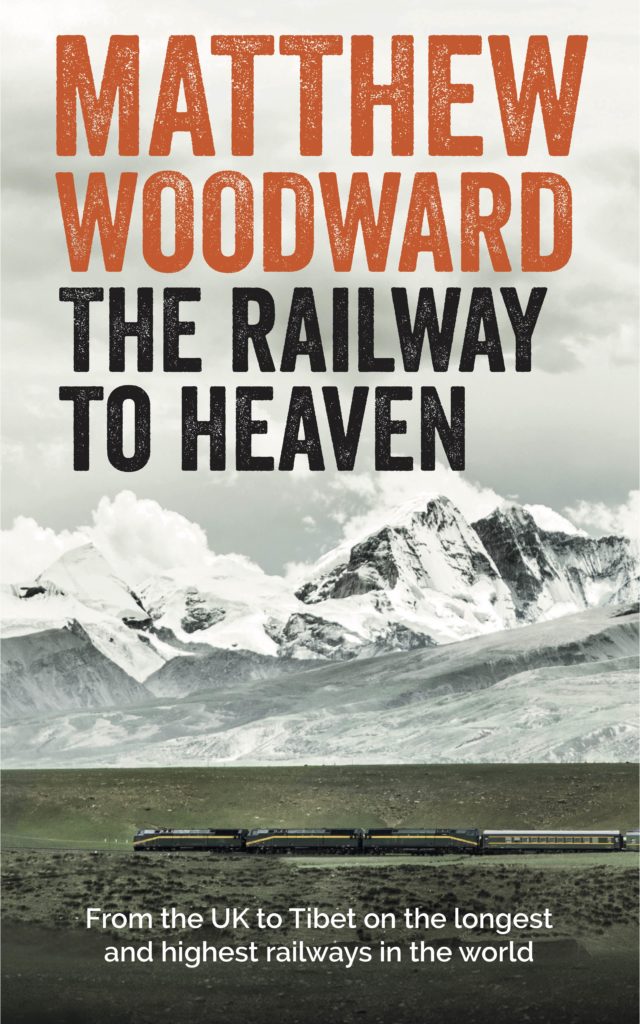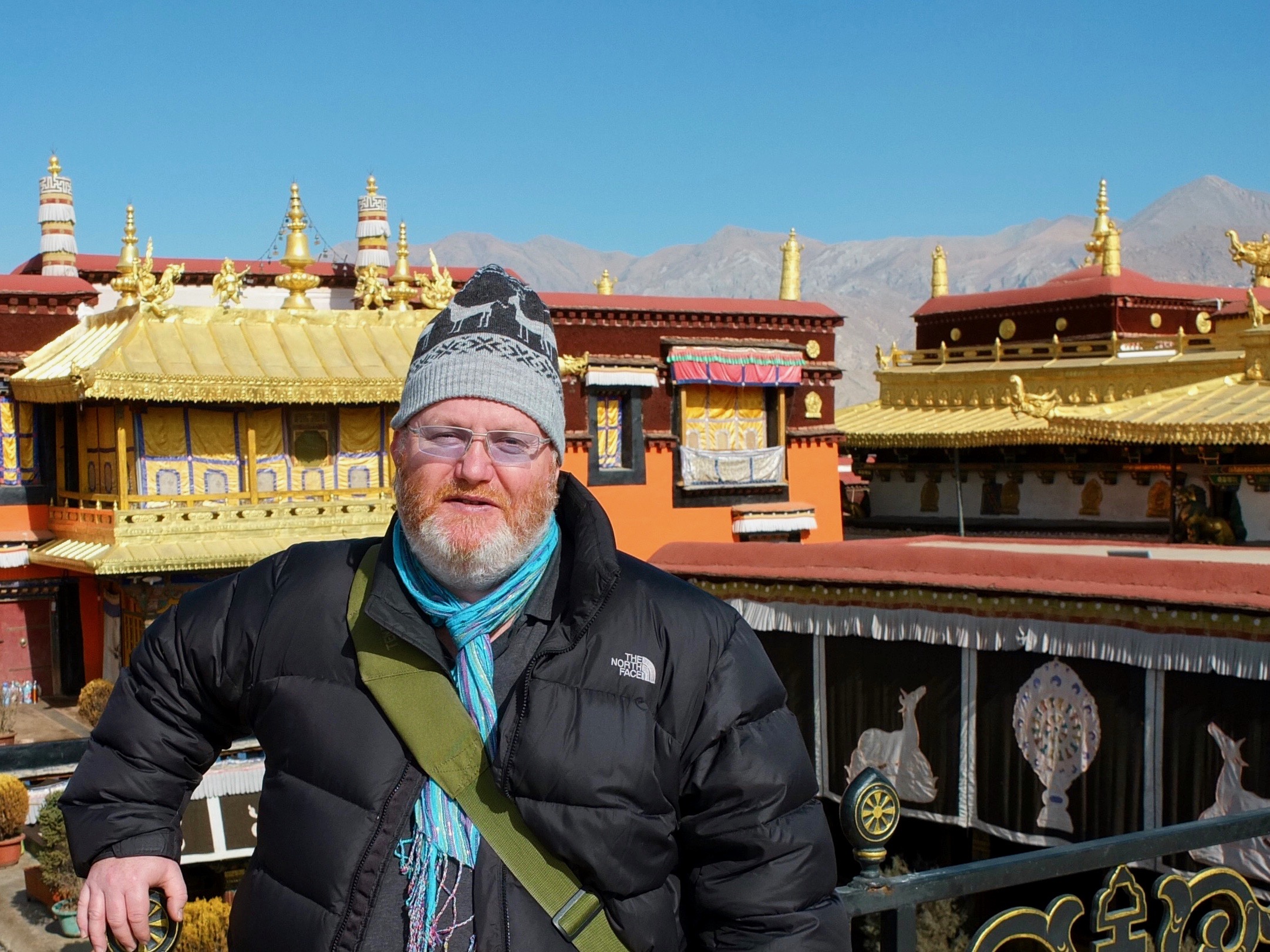In his new book, author Matthew Woodward makes a trip to Lhasa by train, discovering that altitude isn’t just a problem for climbers, but rail adventurers too. This is the train we use to reach Lhasa from Xining on the final leg of our China and Tibet Rail Discovery tour, so we asked Matthew to tell us more about his experience.
It wasn’t possible to reach Lhasa by train before 2006. But everything changed when a new section of the line was completed. This miracle of modern engineering has cut through the mountains by creating a series of tunnels, the longest and highest in the world. Almost half of the track has been elevated above the unstable permafrost, where ammonia heat exchangers keep the temperature of the ground – and thus the ground itself – stable.
After your train has been climbing across the Tibetan plateau through the night, dawn breaks shortly before you arrive at Tanggula, at over 5068 m, now the highest railway station in the world. On board it’s train travel, but not as you know it. The carriages have been specially built to protect passengers from the extreme environment.
Human beings can succumb to altitude sickness from altitudes as low as 2500m, but the chances of this happening at over 3500m are much higher. You might have no symptoms at all, but knowing that it is common to feel a bit under the weather, even if just a headache and a loss of appetite, it’s worth taking advantage of the comfort food that Golden Eagle provide and things that are easy to drink. Carbohydrates are supposedly more effective to convert to energy at high altitude, but with no appetite you might prefer to have a supply of chocolate and goodies. If you don’t want to eat, be prepared to start adding sugar to your tea, and remember to keep hydrated, which significantly reduces the risks and effects of being at high altitude.
Don’t forget to talk to your doctor and understand the medical advice given before you set off. There are specific drugs available that can help minimise the effects of benign acute mountain sickness (AMS), the most well used being Diamox (acetazolamide).

Oxygen is pumped into the train as a matter of course, but people who are unwell are given a higher flow rate through a mask. One advantage of being on a train, rather than climbing, is that it is easy to carry plenty of oxygen to treat any unwell passengers. The train is not pressurised like a jet aircraft, but O2 is added to the ventilation system of the compartments to help simulate a lower altitude, perhaps 2000-3000m, rather than the 5000m outside. It can be hard to sleep at high altitude, as you often have rather weird dreams and can find yourself waking up panting. This is quite normal; it’s to do with acclimatising to the thinner air. However, if you are concerned, you will have the benefit of Golden Eagle’s on board doctor to consult with.
It’s good to keep busy and not let your weakened condition get on top of you mentally. Get off at stops, enjoy the scenery and visit the restaurant carriage to drink tea and talk to people. If you feel too unwell to do this, then stick to your berth and read a book. Writing a diary or a blog with a record of your trip can be a useful distraction and creates a positive mental focus. Photography is also great to keep your brain engaged with your surroundings.
The train is by no means luxurious, but it is well worth the challenges it brings. It has been built to keep its passengers safe and as comfortable as possible in massively challenging environment. It’s a long train and always busy, carrying farmers, pilgrims and tourists across the Tibetan Plateau. There is a reasonable restaurant carriage on board, but many travelers choose to bring their own food. A samovar at the end of each carriage provides safe boiling water. Fresh fruit and instant noodles are the order of the day. At the other end there is usually an open plan washroom and one or two basic toilets, which Golden Eagle’s cabin attendants actively keep clean for their guests, including provisions of much needed toilet paper!

Once the sun has crept back over the mountain tops you are actually already descending, as Lhasa is lower than the Tanggula Pass. You have successfully passed through the highest railway station in the world. When you reach your destination later in the day, the stunning temples and shrines immediately transport you back in time. Those slightly uncomfortable few hours on the train are quickly forgotten. The year here could be 1619 or 2019; you feel that nothing has changed.
As you climb cobbled paths, holy men ring bells and blow their horns, clouds of juniper incense wafts out of doorways, and above you the powerful sun in a cloudless sky illuminates and warms the whitewashed walls. I stop every few minutes, not just to take in the views, but to let my heart rate recover. Pilgrims easily climb past you in the thin air, spinning the prayer wheels, some in a trancelike state. Monks dressed in dark red robes and yellow hats welcome visitors to the monastery, some walking, others making the final part of their journey prostrating themselves at each step. When I finally reached the top of the Potala Palace, I was introduced to a nun who saw that I was wearing glasses and offered to fix my eyesight. It wasn’t an offer to be turned down, and I’m looking forward to seeing the results when I next visit the optician.
You can read about more of Matthew’s adventures in his other blog posts, including time travel on the Trans-Siberian Express and a journey through Moscow’s Cold War past.
An extract from The Railway to Heaven
Other than a mild headache and heavy breathing, I feel fine. A cup of hot sweet tea gives me the energy to go for a wander down the corridor to consult the altimeter: 4950 metres. I am as high as I was at school camp on Mount Kilimanjaro, but without having had any time for my body to acclimatise from the near-sea level of Beijing. And we’re still climbing. I have read somewhere that the extra oxygen-enriched air being pumped in will keep our carriage at an equivalent altitude of around 2000 metres, rather like a jet plane. But the carriage isn’t pressurised like a plane, so I’m not sure how this can be possible.

As the sun creeps above the mountainous skyline I have my first view of the plains of frozen lakes punctuated with the nomadic tents of isolated farmers. And then my first sighting of a yak, an animal that I will come to depend upon for sustenance in the days ahead. This is surely an I-Spy book cliché́: how many points for both a yak and yurt?
 Thinking through my memories of the night spent tossing and turning in my berth, I recall someone joining us at one point. My memory comes back to the surface when I next peer in through the gap in the door of our compartment. My cabin mates are both sitting up in their beds, dressed in their puffa jackets and breathing from oxygen nose-tubes. They look far worse than I feel. I think they must have called for help in the night, but I must have been comatose or delirious at the time. I don’t remember anyone offering me any oxygen. I smile at them and make a thumbs-up sign. Andy does his best to look happy, but they are clearly both miserable. They decline my offer of tea, but that’s understandable; what self-respecting Chinese person would trust a westerner to make their tea?
Thinking through my memories of the night spent tossing and turning in my berth, I recall someone joining us at one point. My memory comes back to the surface when I next peer in through the gap in the door of our compartment. My cabin mates are both sitting up in their beds, dressed in their puffa jackets and breathing from oxygen nose-tubes. They look far worse than I feel. I think they must have called for help in the night, but I must have been comatose or delirious at the time. I don’t remember anyone offering me any oxygen. I smile at them and make a thumbs-up sign. Andy does his best to look happy, but they are clearly both miserable. They decline my offer of tea, but that’s understandable; what self-respecting Chinese person would trust a westerner to make their tea?
The Railway to Heaven by Matthew Woodward is published by Lanna Hall in paperback at £8.95 and Kindle at £3.99. Find Matthew on Twitter @OnTheRails

 Search
Search





